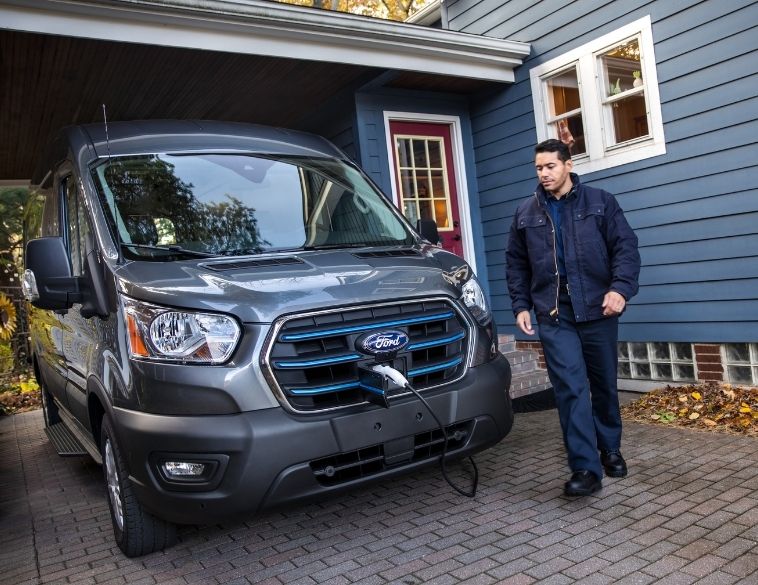Funds have been allocated for greening the vehicle fleet, but are they enough?
When the Government of Canada released details of the 2022 Federal Budget, there was, not surprisingly, a strong emphasis on environmental sustainability, along with other measures aimed at housing affordability and business innovation.
When it comes to transportation, the budget outlined investments in clean technologies as well as carbon capture, utilization and storage.
The greening of the vehicle fleet has been a hot topic for a number of years and at the federal level, the Government of Canada continues to push towards greater adoption of zero-emission vehicles as well as the infrastructure necessary to support them.
According to a statement released by the government, road transportation in this country still accounts for approximately 20% of all greenhouse gas emissions, meaning that in order to achieve a proposed net-zero economy by 2050, significant progress must be made.
Measures contained within the 2022 budget related to these goals include $3 billion towards incentives to purchase zero-emissions vehicles, as well as building a national network of electric charging stations.
Yet, with a goal of achieving 100 percent sales of zero-emissions vehicles by 2040 (which includes light, medium and heavy-duty) serious infrastructure developments and incentives will be required.
Broader scope
From a statement released by the Government of Canada on April 11, Budget 2022 proposes to provide $1.7 billion over five years, starting in 2022-23, with $0.8 million in remaining amortization, to Transport Canada to extend the Incentives for Zero-Emission Vehicles (iZEV) program until March 2025. The government also says that this program will also be broadened to support the purchase of more different types of new vehicles, including pickups, vans and SUVs, which increasingly represent a larger percentage of the Canadian vehicle parc.
While federally, the government has assisted in building approximately 1,500 charging stations across Canada since 2015, far more will need to come on stream if this country is to stand any chance of achieving 100% zero emission vehicle adoption before 2050.
Among the highlights in Budget 2022 designed to move forward with ZEV adoption include:
$500 million in investment from the Canada Infrastructure Bank (CIB) in large-scale urban and commercial EV vehicle charging/refueling infrastructure. According to details in the budget, this funding will be sourced from CIB’s existing resources within its green infrastructure investment priority area.
$400 million over a five-year period (beginning 2022-23) to Natural Resources Canada to fund ZEV charging infrastructure development in suburban, rural and remote communities (funding provided through the Zero-Emission Vehicle Infrastructure Program (ZEVIP).
$2.2 million allocated over a five-year period (beginning 2022-23) to Natural Resources Canada, with the goal of renewing the Green Government Operations Fleet Program (this initiative is designed to conduct readiness assessments to determine what federal buildings require to be EV compatible).
Medium and heavy-duty fleets
Additionally, Budget 2022 also outlined plans to help medium and heavy-duty fleets to transition towards zero-emissions vehicles.
Budget 2022 proposes to provide $547.5 million over four years, starting in 2022-23, to Transport Canada to launch a new purchase incentive program for medium- and heavy-duty ZEVs. This would include:
Providing $33.8 million over five years, starting in 2022-23, with $42.1 million in remaining amortization, for Transport Canada to work with provinces and territories to develop and harmonize regulations and to conduct safety testing for long-haul zero-emission trucks.
Providing $199.6 million over five years, starting in 2022-23, and $0.4 million ongoing, to Natural Resources Canada to expand the Green Freight Assessment Program, which will be renamed the Green Freight Program. This is designed to support green retrofit programs for existing vehicles across a wide range of different fleet types.
In summarizing Budget 2022, current Deputy Prime Minister and Minister of Finance Chrystia, Freeland, stated: “Budget 2022 is about growing our economy, creating good jobs, and building a Canada where nobody gets left behind. Our plan is responsible and considered, and it is going to mean more homes and good-paying jobs for Canadians; cleaner air and cleaner water for our children; and a stronger and more resilient economy for years to come.”
While the current federal government has outlined some very ambitious plans for achieving zero emissions transportation targets, fleets will still need to carefully assess their individual requirements when it comes to EV adoption, as well as a realistic timeframe for doing so; regardless of grandiose political declarations by government, media and other sources.



